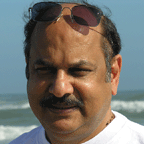 The City of Bundi (Hadoti Region) was established around 1241 AD by the Hada Rajput Chief Rao Deva, or Deoraj, who captured the town from the Bhils and other tribals of the area. In the past, a tribe called Meena (notorious robbers) inhabited this region and Bundi derived its name from the tribe' chieftain's name - Bunda Meena. The State lies on the north-east of the River Chambal, in a wild and hilly tract, historically known as Hadoti.
The City of Bundi (Hadoti Region) was established around 1241 AD by the Hada Rajput Chief Rao Deva, or Deoraj, who captured the town from the Bhils and other tribals of the area. In the past, a tribe called Meena (notorious robbers) inhabited this region and Bundi derived its name from the tribe' chieftain's name - Bunda Meena. The State lies on the north-east of the River Chambal, in a wild and hilly tract, historically known as Hadoti.
The City of Kota was established as early as 1264 AD but was part of the Hadoti Region ruled by the ruler of Bundi. In 1579 AD, the ruler of Bundi, Rao Ratan Singh handed over the smaller principality of Kota to his son, Madho Singh. This arrangement continued till 1624 AD when Emperor Jahangir, the great Mughal ruler, partitioned Bundi and made Kota an independent State. Rao Madho Singh ascended the throne of Kota.
The State of Bundi, older and more picturesque than Kota, never recovered from this partition of Hadoti Region. Bundi suffers from an inferiority complex as Kota has developed into a major industrial area while Bundi still lives with its past glory. The mighty River Chambal divides the two Hada Kingdoms created by the descendents of the Rajput Chauhans of Ajmer.
This outstanding Palace, built during the 16th and 17th centuries, is on the side of the hill below the Fort. It is a classic Rajasthani architecture. Only part of the Palace is open to the public. The Palace is entered through the Hathi Pole (Elephant Gate) into a small courtyard. Hathi Pole was built by Raja Ratan Singh in 1620 AD. You then come to the Ratan Daulat, the Diwan-e-am (Hall of Public Audience), where there is a marble throne.
Adjacent to the fort and past the bazaar, a wooden gate leads to the beautiful Bundi Palace. The highlight of this palace is the beautiful murals that carry the spectators back into the time of Bundi royalty. The murals cover almost entire palace walls; however, all these areas are not open for public viewing barring the Chitrashala. For visiting other areas, special permission needs to be obtained from the secretary of the Maharaja of Bundi. Photography is not allowed otherwise Bundi palace, illuminated with lights during night, presents a glowing beauty to be captured on camera.
Bundi is known as the “City of Stepwells”. It has about fifty beautiful tanks and stepwells called “Baoris”. This one known as “Rani Ji Ki Baori” or “Queen’s Stepwell” is the best because of its architectural beauty. It was built in 1699 AD by Rani Nathawat Ji, the Queen of Rao Raja Anirudh Singh of Bundi (reigned from 1681 to 1695 AD) who distinguished himself in the Imperial Campaigns of Aurangzeb in the Deccan, in the seize of Bijapur and also saw service in Afghanistan. Baoris used to be the center of religious and social functions in those days. Rani Nathawat Ji is reputed to have built twenty such Baoris. This Baori was constructed during the reign of her son, Maharao Raja Budh Singh, who ruled Bundi from 1695 to 1729 AD.
 The City of
The City of 

2 Comments:
"In the past, a tribe called Meena (notorious robbers) inhabited this region and Bundi derived its name from the tribe' chieftain's name - Bunda Meena."
Are bahi History padlo..don't propagate history n terms given by Rajputs and British... Meenas were the ruler, and then Rajputs were seen as foreigner invader over Bundi. Meenas were robber and robing British wealth as any other freedom fighter at that time. Its 2007, ab to apna point of view change kerlo..ya still you want to walk on British footprints. Robbers can not build kingdoms. just read many books and articles over http://books.google.com/
Any information on places to stay?
Post a Comment
<< Home